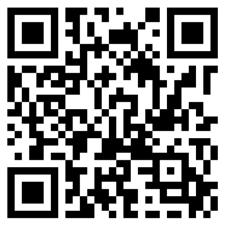RESULTS
Seventy-two people participated in this study, including 50 interview participants and 22 focus group participants. Table 2 summarizes the demographic characteristics of interview participants. Table 3 presents the geographical representation of focus group participants. Demographic information was not asked from focus group participants.
Interview participants were from Alberta, British Columbia, Manitoba, New Brunswick, Saskatchewan, and the Yukon. The age range was relatively balanced across strata, with the exception of the 60+ age group, which had only three participants. Interview participants were also relatively balanced with representation from both urban (n =28) and rural areas (n =22). Most interview participants, however, self-identified as First Nations (86%), female (56%), and were from Manitoba (56%).
Focus group participants were from Alberta, British Columbia, Manitoba, Ontario, and Saskatchewan. Representation was unbalanced across rural and urban areas with 11 out of 13 service providers and eight out of nine policy-/decision-makers from urban areas, respectively.
TABLE 2. DEMOGRAPHICS OF INTERVIEW PARTICIPANTS
In-depth interviews
Life
situations
The general life situations of interview participants were asked through questions such as “How is life going for you now?”; “How are things going with your health?”; and “Can you tell me about your living situation?” . Participants responded by sharing experiences of stress, dissatisfaction with or unstable housing, and poor mental health.
Stress
Most participants expressed feeling some sort of stress, especially financial stress relating to food affordability. This was attributed to rising costs of living, unemployment, and the inability to draw on food banks
or other food programs due to COVID-19-related closures. Income was supplemented by many participants through attending groups or volunteering initiatives, in which they received an honorarium. However, most of these initiatives were halted at the start of the COVID-19 pandemic.
“Just seeing my girlfriend and my cousin’s people suffering; [they] really needed that mental support or physical or just like the gift cards from them, stuff like that.”
(Interview participant)
“[2 years ago] it shut down one of our jobs when it first arrived here, the pandemic, our jobs got shut down. But now it’s starting to pick up, I’ve been working pretty steady.”
(Interview participant)
Housing
Some participants were experiencing homelessness at the time of the interviews.
“Me and my partner are homeless. Yeah, we’re couch surfing. That’s the only one thing that’s stressful… It’s hard, hard to find a place up here…. The rent is so high and it’s hard to get in with reasonable rent.”
(Interview participant)
“My mom pretty much left me on the street when I was 15 ... and I’ve kind of been homeless ever since. Everything just seems to get harder for housing and everything.”
(Interview participant)
Of the participants who had housing, many were dissatisfied with their current living situation or were newly housed after either experiencing homelessness or living in unstable housing. Some participants commented that they had help from a community agency in finding temporary housing until permanent housing in apartments was available. Other participants commented that they would have liked to live alone but were forced to live with family due to limited income, while those who lived alone shared how lonely they were during the pandemic.
Substance use was also identified as a barrier in attaining housing for a few participants. Of those who were using treatment services for substance use or addiction, some experienced homelessness
prior to receiving treatment services and intended to find housing arrangements once the treatment was finished.
“I have a crystal meth addiction and they all, all the landlords know that. So, they won’t, they won’t rent to me.”
(Interview participant)
Self-reported mental health
Almost all participants expressed currently or recently experiencing harms from substance use, particularly from drug use. It is important to note, however, that this may be attributed to the fact that many of the partner organizations that participated in the study assisted those living in marginalized and disadvantaged conditions. Nevertheless, when asked about their mental health status, many participants
expressed struggling with mental health in general, with most participants having struggled since before the pandemic. Some participants shared specific diagnoses, such as bipolar disorder, depression, and anxiety, while others shared experiences of trauma and subsequent substance use contributing to poor mental health.
“My mental health needs a bit of work. That’s why I wish these [community services] could get some funding for their counselling projects they want to get going and it takes money to do that. Right now, I’m talking to them out of the goodness of their hearts, pretty much... they make you feel like you’re meant to be alive and there’s a reason to live and don’t give up and try to be safer at whatever you do.” (Interview participant)
“I get really manic. Like really depressed. But I don’t go to the level I used to be. I was really, really, really, really, bad. I was kamikaze bad.”
(Interview participant)
“It’s not going too good. Well, it’s not that easy to get to talk to a counsellor... They’re available but they won’t talk to you.”
(Interview participant)
Several participants shared that they were dealing with grief and loss, some of which was related to the pandemic. This was especially experienced by those in northern communities. Participants also expressed losing loved ones during the pandemic and not being able to attend ceremonies, funerals, or have proper goodbyes. This made dealing with loss more difficult.
“[I]t was a struggle through the pandemic, and uh adjusting to life and dealing with so much death, like constantly and constantly.”
(Interview participant)
“Up here, up north, we didn’t just, you know, the pandemic of COVID, we also went through this flipping pandemic of opioids cause in [town name] we have the highest counts in Canada of losing people to this opioid fentanyl death. So, it’s really hit a lot of my family, friend’s family, like everybody, and it’s not stopping yet, we’re still losing people.” (Interview participant)
Changes in mental health and substance use
Participants were affected by the pandemic in various ways, including mentally and socially. Social distancing interventions, the closure of community events, and the fear of contracting COVID-19 were noted as contributors to feelings of social isolation, loneliness, and boredom, each affecting participants’ mental health and patterns with substance use. When asked to describe their usual activities for a typical week, many participants shared of not engaging in any activities or leaving their homes. Some participants discussed the additional stresses of isolating with other people in a small space, as well as the limited social interactions that occurred outside of the home.
“I don’t see anybody and I don’t do anything and that’s my whole life ...” (Interview participant)
“I feel so isolated ... I guess the depression, I don’t go nowhere. Sometimes I won’t go out for a couple weeks, or step outside or nothing ... I just don’t have the energy to do anything ... it’s just this COVID is dragging on so long.” (Interview participant)
“I feel very isolated, you know... Alone and no real contact, so you know. Everything just closed down, right? I’m slowly opening up but it’s quite depressing. I’m very depressed.”
(Interview participant)
In instances where social distancing resulted in loneliness, social isolation, and/or boredom, some participants reported an increase in alcohol use as a coping measure.
“My drug use has actually gone down, but my drinking has gone way up. And then like, physically, like, I’m just, I’m not doing well … I don’t exercise at all ... it’s not the active lifestyle I was living.” (Interview participant)
“I’m drinking more. Nothing else to do.” (Interview participant)
“I’ve been drinking more since I had to stay home ... I was only doing that on the weekends, but now it just seems like it’s every other day.”
(Interview participant)
“Everything was shut down, so people they reverted to more drinking, more drug use, more sexual things that way.”
(Interview participant)
Other participants reported an increase in drug use as a coping measure.
“My community members ... that had good jobs, paying jobs are now like drug addicts and there was nothing else to do, but stay home, get drunk, and be addicts.” (Interview participant)
“Well yeah, it impacted my drug use cause like, I’m at home all the time, so like, you know, do something, I get bored. So, we’ll smoke.” (Interview participant)
“It made me fall off and start using more at the time, especially alcohol and crack. Basically, you couldn’t go anywhere, you just had to stay at home inside. So, it just made me and my partner to start drinking and [using] crack more.” (Interview participant)
“I was sober for almost 3 years [but began using substances since the COVID-19 pandemic]. [Now] mainly fentanyl.”
(Interview participant)
“When COVID came I wasn’t doing things I would normally do, like going to [location removed to maintain confidentiality] and talking and sharing. And then ... can’t get out as much... I applied for COVID relief money and I was getting those cheques and I started smoking [crack] more and more.”
(Interview participant)
Social isolation was self-imposed by some individuals because of the fear of contracting the coronavirus, SARS-CoV-2, that causes COVID-19. Although a few participants were fearful of contracting SARS-CoV-2, most expressed a fear of carrying the coronavirus into homes where it could infect children or elderly family members. The fear of spreading SARS-CoV-2 to family members and health care providers also influenced the decisions of some participants to leave their home and/or seek healthcare services.
“It’s been the social restrictions, but it’s also my own paranoia and sort of self-imposed restrictions.”
(Interview participant)
“I try to play by the [health] rules the best I can. Cause the staff here [community clinic], I don’t want to pollute them. Like, these people are pretty special to me, and I don’t want to bring them any death. I was walking through, you know, trail of hell. And like, they held my hand. If it wasn’t for them, I’d be a ghost.”
(Interview participant)
COVID-19 and Indigenous peoples’ access to STBBI and related health services:
Impacts to health care and other services
Health care service capacities
Several participants reported not having a family doctor before the pandemic and experiencing difficulties with accessing health care, particularly counselling services. The challenges with accessing health care continued to be a problem during the COVID-19 pandemic.
“Oh gosh, there was really barely anything at the time when it was really bad. Like, nothing was open. I mean, we did have [health organization] but we had to call them... It was pretty rough. They wouldn’t let you in there [women’s shelter/safe space] and there was nowhere to go. The services were shut down and everything. It was really, really, really hard.”
(Interview participant)
Interview participants observed a decrease in operating hours of STBBI services during the COVID-19 pandemic. The reduction in service hours hindered service accessibility for clients in addition to leading to frustrations with having to wait for health-related services or resorting to using emergency departments for non-urgent issues.
“[It] felt a lot easier to access things, now it seems so difficult.” (Interview participant)
“Services are limited. That affects me a lot. I get angry because I can’t get my supplies or I can’t get safe supplies or anything ... if I had an infection or something, I wouldn’t be able to get it taken care of right away. I would have to wait ...”
(Interview participant)
“There are services like you have to go there on certain days. Or you have to go to be there on a Wednesday for opioid treatment, or you have to be there on Thursday for something different. And I don’t always remember which days are which.”
(Interview participant)
“Sometimes we would have to fall off, like with the fentanyl, because we weren’t able to get in right away. You’d wait for their callback or whatever, right? Yeah, it was bad, I didn’t like that, and it was scary because you know it’s killing a lot of people. It would take at least 2 or 3 or 4 days [for a callback] so I’d have to relapse, then I’d start right over.”
(Interview participant)
“It was like more of a deterrent because I would show up to a place and they would say can you come back in half an hour to when the space becomes free. And like, by that time I’m already like deterred, like I’m already gone doing something else.”
(Interview participant)
“The only negative experience I’m having is I’m trying to get on the treatment for the last [expletive] month and it seems like it’s been delay after delay after delay. We had a bunch of these other people that just got on it [treatment for Hepatitis C] and it’s really pissing me off.” (Interview participant)
Participants also noted that STBBI staff and service locations were frequently changed during the COVID-19 pandemic. As a result, one participant discussed having to build new relationships with care providers and service staff. Other participants spoke about the loss of rapport and trust between clients and staff.
“Services definitely used to be better. It’s not that [the services] changed, you got new people coming in thinking that they know how to run the show but they don’t.” (Interview participant)
“We’re opening a window and giving them coffee and giving them their harm reduction supplies and sending them on their way … We don’t know if they’re having a bad day or ... if they need to talk to somebody. Like you don’t even get that with a mask on your face and say 60 seconds of interaction through a window... Maybe that person wanted to go, come in and get tested that day, but they felt so rushed that they didn’t even bring it up.” (Interview participant)
Furthermore, some participants began to assume that all services were closed or shut down, while others no longer wanted to deal with all the associated changes in service provisions. As a result, a few participants eventually stopped trying to use services altogether during the pandemic or only used services for health emergencies.
“There’s these protocols they got to go through in the entry and then to be rapid tested and all that. I don’t know. It’s just too much of a hassle to even bother …”
(Interview participant)
“I am more reluctant to go get services and stuff like that ... so sometimes I just don’t really go access as much as I should.”
(Interview participant)
Several participants spoke of multi-functional STBBI services that were available prior to the pandemic. In addition to providing health care, these services previously provided food, assisted with meeting basic needs, and created spaces for community, connection, and socialization. During the pandemic, however, the multi-functionality of services was reduced, which often translated to fewer opportunities for socialization and community connections within these services.
“It’s changed the way the resources are given... cause it’s, it’s different now... Like at [location removed to maintain confidentiality] where you were able to go in and eat and like converse with people, but now you can, you just go and wait in the line and then I get a bag lunch and leave.”
(Interview participant)
“They’ve still been serving food to people, but it’s been through a door service. So, people, people get their food, they get to go eat it on the sidewalk, on a cold sidewalk, while their food is getting cold. Instead of needing to come in and sit at a table and just have a ... clean space to eat.”
(Interview participant)
“There’s a lot fewer places to hang out … They’re restricted by COVID. You have to have a vaccination card ... fewer people to interact within those social settings.” (Interview participant)
“They’re pretty strict on population. Like, I’m the only one in here now. Like, without that COVID stuff, they’d have a lot more than just one person in here... They’re probably a little more one on one with the people. Instead of one person having six different conversations coming at them, they’re more able to go one on one-ish better... Pissed a lot of people off, but they had to do it because they had to do it.”
(Interview participant)
“… hygiene issues. Like going to the bathroom, getting washed up and stuff. That’s like a big thing, and having a safe space to, like, sit down and just relax for a couple of minutes.”
(Interview participant)
There were a small number of rural participants who indicated that services did not change at all during the pandemic. This was attributed to the strong social connection and closeness that rural and small-town community members experienced with each other.
“I understand how it could be different for people outside of such a small town ... because we do have a personal connection with the health care providers ... That probably has an effect on the reason that our access has not been altered.” (Interview participant)
Remote services
The transition from in-person and walk-in STBBI services to remote appointments (e.g., telephone and/or virtual) was challenging for many participants during the pandemic. Challenges shared by participants included unstable internet connections, a lack of appropriate technologies, the impersonal nature of remote services, and the inability to address health concerns perceived to require in-person care.
“... no, because we have to do it by phone or whatever. I didn’t even bother.”
(Interview participant)
“It’s [remote services] made everything more difficult. Like it is harder to just go out and do the stuff you need to do.”
(Interview participant)
Among participants who could schedule or take part in remote appointments, some commented that appointments were frequently scheduled too far in advance to remember or to remain applicable for health concerns. This was particularly difficult for participants struggling with other competing priorities, such as meeting basic needs.
“[C]ause a lot of things come up at different times and if money comes up and I’m at this point of unemployment, I’m going to have to take that option as opposed to go get my appointment.”
(Interview participant)
Transportation services Transportation was frequently mentioned as an impediment to accessing STBBI services. During the pandemic, participants noticed a decrease in public transportation options and availabilities. Transportation services that were previously available before the pandemic, such as ridesharing with others, hiring community members for rides, or using taxi vouchers, were limited due to COVID-19 public health restrictions. Some participants shared that the limited access to services likely worsened their health. Others attributed this inaccessibility to STBBI-related services to relapsing during the pandemic.
“I used to go see the doctor, but after the COVID came in, I never got to see the doctor.”
(Interview participant)
“I went to [a mental wellness/ substance use service] and used all of their services because they’re really good, but I haven’t gone there since I stopped going to counselling last year [during COVID].”
(Interview participant)
Racism and discrimination
Many participants recounted experiences of anti-Indigenous racism and discrimination at health care organizations or centres, however, some experiences seemed to depend on whether clientele felt accustomed to their healthcare facility. For example, many interview participants did not experience racism or discrimination in health care environments that they characterised as “usual” or familiar and that they frequently visited. In these instances, participants shared about the significance of the organizations or centres they frequently visited, acknowledging the judgementfree and accepting treatment they received from staff.
“I went to the, our treatment centre ... located here on the [location removed to maintain confidentiality] reserve. And it was, for me, it was healing because I’m healing with my people, I’m healing at home.”
(Interview participant)
In contrast, adverse experiences of racism, discrimination, and stigmatization by healthcare professionals, front-desk staff, support staff, and security occurred at healthcare facilities that participants did not frequently visit. Participants spoke of harmful attacks to Indigenous and gender identity and expressed the need for systemslevel change. Additionally, interview participants noted that racism, discrimination, and stigmatization extended beyond healthcare facilities, such as with law enforcement, landlords, and/ or security at retail locations.
“I think like there’s a stigma, like there’s lots of stigmas. I mean if I say that I used drugs in any way and then like, I get put into a certain category. I’m like, you know, bigger bodied and like, I look pale right here, but I, you know, I’m brown skin … all those things impact it. And like, as soon as you walk into a hospital space, like as ... a non-white person, ... immediately, like you feel the-, you feel those things. And so, I dunno, I just didn’t want to deal with it.” (Interview participant)
“They assume that anyone’s like addicted to drugs or like something, anyone of color is like, addicted to drugs ... that’s how they treat us … just refuse us service, so they make us wait extra long … Like people just tend to be rude and like assume that like, Aboriginals are homeless or on drugs here …”
(Interview participant)
“It’s hard being Native, a woman, and a drug user here. It’s very hard.”
(Interview participant).
“I mean, yeah, like another big thing is like the gender, like pronouns and … people not respecting any of that or… I’ve said a million times over to all these different places that like, my name is not the one that I was given at birth. [A]nd every single time I had to access a pharmacy or like a medical clinic that I’m not familiar with, like that always comes up. [A]nd you know, it’s really hard to hear that over and over again. So sometimes you choose your mental health over your physical health in that way. So people not using my chosen name or my pronouns. I dunno. Yeah, just sometimes you just don’t want to deal with [it].” (Interview participant)
“A lot of people are judgemental about us, addiction, people that have addiction.”
(Interview participant)
“It’s a lot of judgement. It’s pretty much like a stereotype. They think oh, you’re Indigenous, oh wow, you’re an alcoholic, go figure. They don’t treat you like an individual person, they just really kind of categorize you.”
(Interview participant)
A few participants also felt that the pandemic exacerbated the issue of racism and discrimination.
“Yeah. I think that like one thing that the pandemic has really shown, and put like kind of a microscope on things, that were already not working. [A]nd like specifically [that] stigma [and] the way Indigenous people are treated in health care settings, that was really amplified… I think that that’s, the system change that, you know, it was being worked on, but it needs to be worked on a lot more.” (Interview participant)
It is important to note, however, that the experiences of racism, discrimination, and stigmatization are not a direct causal effect of the COVID-19 pandemic. Rather, these experiences may reflect the historic and ongoing issue of racism, discrimination, and stigmatization faced by Indigenous Peoples, that is rooted in colonialism and embedded in colonial healthcare systems.
Positive aspects of health care changes
Although most participants discussed the disadvantages of STBBI service changes during the COVID-19 pandemic, some participants spoke of innovative and helpful service changes. This included an increase in outreach services providing health visits, as well as home drop-offs/pick-ups of food hampers and safe-supply materials, such as harm reduction and safe injection supplies.
“Supplies get dropped off at my place, which I prefer because going to the hospitals, we felt like we were being judged because we had to walk with stuff in bags. Now they just come straight to my place and drop them off.”
(Interview participant)
“I didn’t have to go to town and face the drugs. I didn’t have to sit in a clinic for an hour waiting for a doctor.”
(Interview participant)
Participants also shared about the positive aspects of remote services. For example, health needs were self-reportedly better met or discussed over the phone compared to in-person for some participants. Others enjoyed the convenience, safety, and comfort of telephone appointments, including not having to commute long distances and/or wait outside in cold weather for in-
person appointments.
“When I gotta see my doctor, it’s by video conference... I don’t have to walk over there all the time and I don’t really like walking over there.”
(Interview participant)
“Yeah, with virtual becoming an option [it’s] made it pretty faster? Pretty like- more efficient, to kind of get like, answers, information that I was looking for, from a professional.”
(Interview participant)
Impacts to cultural connections
Interview participants were asked how, if at all, changes to STBBI-related services during the pandemic impacted their access to cultural supports, such as traditional medicines, Elders, ceremonies, or on-the-land activities. Responses varied based on the use and availability of cultural services. One participant noted the significance of having Elders available at a particular community organization during the COVID-19 pandemic. Several other participants previously participated in spiritual and cultural events, such as sweats, powwows, and an annual Sun Dance, before these activities were stopped due to pandemic restrictions. Participants shared that the interruption to spiritual practices and healing ceremonies during the pandemic intensified feelings of loss and grief.

The interruption to cultural supports was navigated with resiliency by participants who practiced personal cultural activities during the pandemic, such as smudging and using traditional medicines. Some participants noted they did not experience any difficulties in retrieving what they needed for their personal ceremony. Others described the benefits that cultural activities had on their well-being.
“I don’t go party on the street, I’ll go in the bush and I’ll pick plants and mushrooms and go fishing. Do stuff like that to fill up my day.” (Interview participant)
“It’s been really good. Like without it, I feel like it would be harder to, like, maintain my sobriety.”
(Interview participant)
“That’s what kept me sober for the two and a half years. Helped me maintain my sobriety.”
(Interview participant)
A small portion of participants could not comment on the availability of cultural services due to not using these services before or during the pandemic. Some participants did not regularly use cultural supports because of attendance restrictions against individuals who actively use substances. Others participated in cultural activities offered through community services; however, felt that they could not comment on changes to cultural service availability because they did not seek out these services themselves.
Recommendations to improve STBBI services
Several interview participants shared recommendations to improve STBBI service accessibility, availability, and delivery for Indigenous people across Canada. Recommendations included: increasing education and awareness surrounding the availability of services, particularly harm reduction services; increasing service operating hours and availabilities (e.g., extending operating hours into evenings); expanding testing services to non-clinical settings; and increasing outreach efforts to deliver care packages for essential needs.
“[W]e have a whole new population here in [location removed to maintain confidentiality]. They’re younger, they’re coming from all different communities and uh, HIV … and STDs and STIs [aren’t] talked about anymore. It’s not brought up and it should be … this stuff needs to be known.”
(Interview participant)
“They need a place up here for people that need those kinds of access. Like, a little apartment building or a unit place so they can have these kinds of access to for emergencies. All we have is [location removed to maintain confidentiality] but we need somewhere where people can go in late at night, where we can go “hey, I want myself checked out now.” (Interview participant)
“[M]ore testing where it is not so clinical, and it’s not, so it’s not so terrifying for somebody.”
(Interview participant)
“I think there could be more outreach, you know, with respect to First Nations, offering additional food, clothing, supports, say a van. You know people could arrange for a care package dropped off maybe once a week, a “hi, how are you doing” kind of thing. Some outreach would have been nice… I think there could be additional more food supports because the cost of food has just gone way up because of all of it and it’s hard to eat healthy. It really is. It’s gone up like, huge.”
(Interview participant)
Other suggestions made by participants were to ensure that STBBI testing was not overshadowed by harm reduction education and services, and that racism and discrimination are addressed as barriers to care.
Focus groups
Focus group participants were asked to evaluate the delivery of STBBI and related services during the pandemic. This involved discussing challenges in service delivery, the practices that worked well, and recommendations to improve services for future public health emergencies.
Challenges in service delivery
Paper-based systems
Focus group participants discussed the challenges and frustrations of working in a paperbased system. This was reflected in the difficulty of working remotely for staff (i.e., off-site), as well as in the lack of ability to collect appropriate data that might support efforts in future pandemics. Participants who still worked in paper-based systems commented that the collection of demographic information was essentially discontinued during the pandemic, as services had to prioritize fundamentals (e.g., testing) in base programs. Consequently, a few focus group participants shared they did not have sufficient data to answer questions about service accessibility during the pandemic for specific populations, including Indigenous people.
Reduced capacities
Nearly every focus group participant expressed struggling with reduced capacity for service provision and shifted organizational priorities because of redeployment of resources to COVID-19 efforts. According to the focus group participants, the COVID-19 pandemic significantly affected the ability to deliver STBBI services. When asked about the greatest challenges to service provision during the pandemic, many focus group participants spoke about the loss of relationships with clients in the community, some of which took years to develop, as well as the frustrations of trying to support clients in booking online appointments. For example, focus group participants spoke of having to discontinue walk-in services and transition to online or virtual appointments, which did not work well for many of their clientele. A few participants also feared that clients would be deterred from trying to use STBBI services after the pandemic due to the cascading effects of increased substance use and frustration towards the health care system.
Focus group participants noted the closure of certain STBBI services because of reduced capacities. This led to an increased demand for services that remained open during the pandemic, such as low barrier services, and accompanying challenges of matching capacities with increased demands. Meanwhile, services that were deemed “essential”, such
as those dealing with reportable STBBIs,6 remained open with just a skeletal portion of staff (meaning up to 25% of regular staff levels). However, providers of these services acknowledged that offering only essential services did not equate to providing good quality services. In contrast to these experiences, some rural service providers observed a drop in demand by clientele due to the fear of contracting the virus causing COVID-19.
A small portion of focus group participants commented on the collaborative efforts between service providers and Indigenous leaders or communities to ensure that Indigenous people were supported during the pandemic. These participants reported having good collaboration with Indigenous communities prior to the pandemic, while others reported having good collaboration across all sectors, including with Indigenous partners, due to a shared goal of strengthening resilience throughout the pandemic. Some focus group participants provided cultural supports in the form of offering sage bundles and traditional medicines when requested; however, they did not have the capacity to undertake further engagement with Indigenous people at the height of the pandemic.
A few focus group participants provided other outreach and supports, such as taking clients to clinics for appointments, prior to the pandemic. However, much of these outreach efforts stopped because of COVID-19 public health restrictions. Participants expressed that the reduction in outreach and supports, in turn, severely compromised clinical care accessibility, particularly for patients living with HIV. Other participants pivoted outreach efforts towards testing supports but found follow-up and contact tracing for test results to be difficult during the pandemic. Meanwhile, some participants commented that the current outreach efforts would likely stop in the future due to worsening pandemic conditions that would further restrict capacities.
Although most services continued in some fashion during the pandemic, organizational priorities were required to change in relation to testing, follow-up, and contact tracing. Most service providers shared that testing was generally reduced and offered only to symptomatic people, close contacts of symptomatic people, or specific priority populations, including Indigenous clients. Focus group participants also shared instances of COVID-19 testing taking priority over blood tests at laboratories and
limiting STBBI testing activities to urine tests. Additionally, some services no longer had the capacity to provide testing supports to other agencies, such as correctional facilities, shelters, and detoxification centres. Despite a decrease in testing, however, many focus group participants indicated there was an overall increase in test positivity rates,7 which they attributed to a rise in cases. During the pandemic, service providers also noticed a lengthened time between testing and acting on test results (i.e., follow-up, treatment, and case contacting) due to staff shortages. In some cases, followup lasted between 48 hours and two weeks, depending on staff availability. Contact tracing, which would typically be done following a positive STBBI test result, also became increasingly difficult to perform. For instance, participants shared instances of agencies adjusting risk tolerances in which only high-risk STBBI cases led to follow-up and contact tracing.
Overall, nearly all focus group participants concluded that there was a high likelihood of missed cases due to reduced capacity for service provision and shifted organizational priorities. Focus group participants also expressed sadness in observing rising rates of select STBBIs during the pandemic, such as HIV and congenital syphilis.
6 Reportable STBBIs refer to STBBIs that have been identified by the Canadian Notifiable Disease Surveillance System as priorities for monitoring and control. These STBBIs are voluntarily reported to the federal government by provinces and territories (PHAC, 2023).
7 Positivity rate is the percentage of people who test positive out of the total number of people who have been tested.
Successes in service delivery
While many services were stopped or reduced during the pandemic, a few focus group participants spoke about instances of innovation and positive uptake of certain services. For example, participants noted an uptake in self-testing kits (e.g., blood tests and self-swabs). This was described as a positive outcome because these testing services were generally met with hesitation prior to the pandemic. Drive-through testing and outreach services were also mentioned as positive and innovative strategies, particularly for vulnerable populations not yet engaged with testing. Outreach services included home visits, supply delivery, and mobile medical vans.
Recommendations to improve STBBI services
To improve STBBI services, many focus group participants spoke about diversifying the range of tools and methods for accessing care on an ongoing basis such that the structures and mechanisms in place would be flexible to change, as required. For example, participants suggested services should regularly include virtual appointments for clients who prefer virtual over in-person appointments. This expansion would ensure that space is made available for clients who prefer or require in-person appointments. Additionally, the continued provision of at-home self-testing kits was mentioned as working well in many cases.
Focus group participants made recommendations to mitigate the risks and losses associated with the quick turnover of staff to other commitments, including pandemic measures. This included updating data collection systems (e.g., transitioning away from paper-based data systems), ensuring policies and procedures were up-to-date, and crosstraining staff. Participants also shared how systemic change was required to improve the social determinants of health and living conditions of vulnerable populations. Without addressing these inequities, participants noted it was unlikely that services would see greater success for the next public health emergency.























